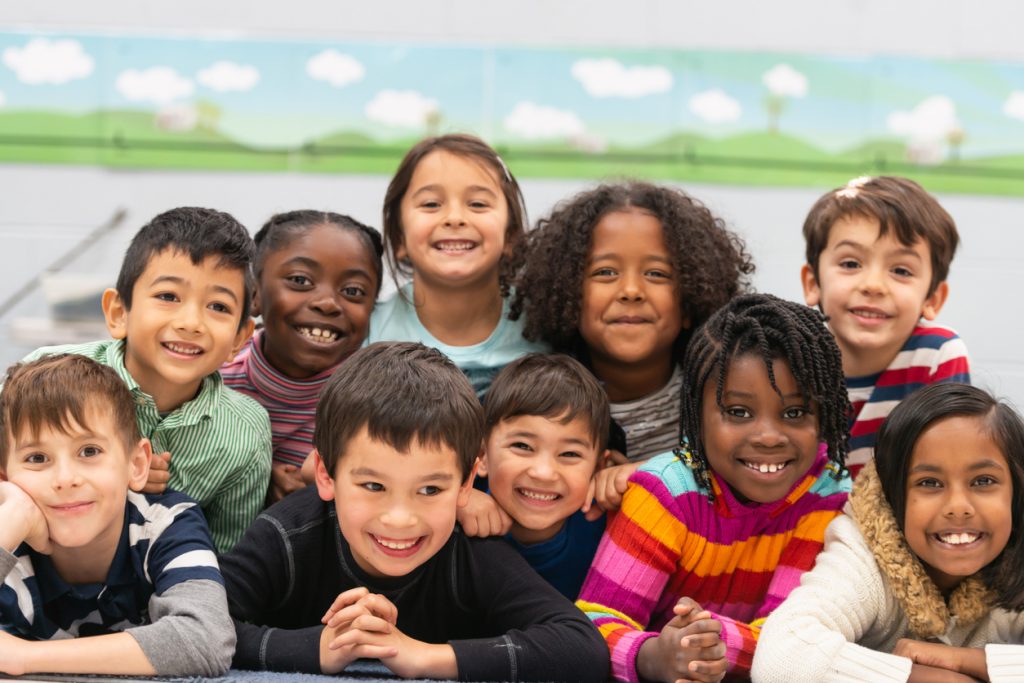Given the tragic and racially-charged current events, many parents are wrestling with their own feelings, their hopes to educate their children about these issues, and the difficulties of helping their children thrive in a world with racial biases. We are constantly confronted with the complex issues of race, racial identity and racism every day. Despite the significance of these topics, parents often find themselves struggling with how to discuss these issues in an age-appropriate manner for their kids. Children are eager to know and to learn, and like sponges, they soak up information easily. But without clear direction and navigation, they can easily develop wrong ideas and perceptions around these topics.
The American Academy of Pediatrics is committed to addressing the factors that affect child and adolescent health with a focus on issues that may leave some children more vulnerable than others. The AAP states, “Racism is a social determinant of health that has a profound impact on the health status of children, adolescents, emerging adults, and their families. Although progress has been made toward racial equality and equity, the evidence to support the continued negative impact of racism on health and well-being through implicit and explicit biases, institutional structures, and interpersonal relationships is clear.” The American Public Health Association views racism as a public health crisis in the US.
All parents should talk to their children about racism. Here are a few tips to help:
- Take charge of your emotions and feelings first. It is crucial to first confront your own thoughts and biases. Set an example for your kids through your thoughts, words, and actions. Racism is not always as explicit and clear cut as someone using a slur or telling an offensive joke. Many times, even those who consider themselves “not racist” may have deeply held beliefs or narratives that wrongly stereotype groups of people.
- Be honest with yourself and with your children. Let your child’s age and developmental stage guide your discussions. If children approach their parents ready to talk about race, it is also a good sign that they are ready to talk about it.
- Infants and toddlers cannot understand all the happenings in the community, but they can pick up on the anger, anxiety and frustration in their family members. They may demonstrate stress as fussiness or irritability. Try to watch the news and discuss these issues when the baby is not around.
- Start discussions early: by six months of age, babies are noticing racial differences. By age four, children have begun to show signs of racial bias. Let your child know that it is okay to notice skin color and talk about race. Start talking about what racial differences mean and do not mean. It is okay to bring up people’s physical differences before your child does. A good time to do this is when you are playing with toys and pointing out various physical attributes.
- Foster respect for people regardless of appearance, race, national origin, disability, social status, etc. Respect attempts to sensitize kids to the feelings of others. It is common for children in the four-to-six age group to assign positive traits to people of their own ethnic group and negative traits to people who look different. Talk to them about overcoming stereotypes by discussing the important contributions made by people of color. Talk to your kids about people who have stood for justice and equality.
- If your child is a person of color, do not try to avoid the hard conversation about the harsh realities of life as a person of color. Do not shy away from these conversations. Focus on positivity and self-esteem. Tell them stories about resilience and resistance.
- For kids who are eight to ten years of age, you want to have plenty of relevant and relatable books on these topics to read at home. Diversify your child’s library! Study and talk about the histories and experiences of groups such as African Americans, Latinos, Asian Americans, Native Americans and whites, among others. Check out this post from Brightly on “How to Diversify Your Child’s Bookshelves.”
- Talk to your children about addressing and overcoming mistakes. Once your child understands why another person is offended, they can sincerely offer an apology.
By age 12, many children become set in their beliefs, including about race. As parents, we have this window of about a decade to mold their learning process to decrease racial bias and improve cultural understanding. There are many ways to broach this extremely important topic of race with children at every developmental level. Now more than ever, the world needs people who are compassionate and just. Do not miss out on critical opportunities to teach children to become tolerant of differences and create a culture of inclusiveness from an early age.






Comments